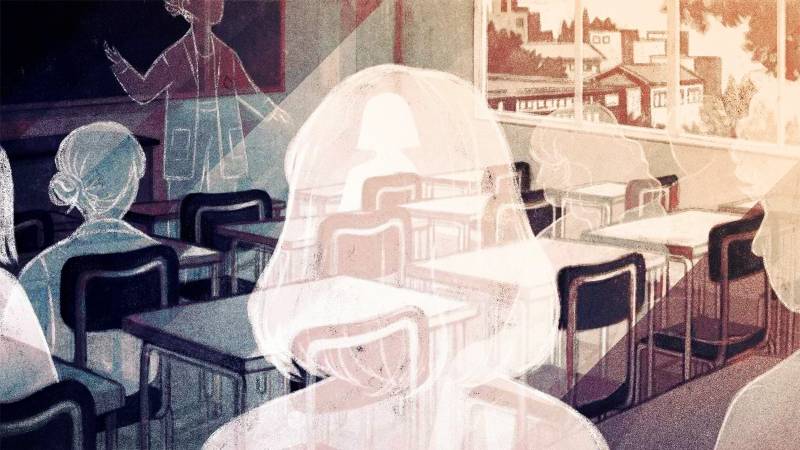"They find ways to disappear when they don't want to be found," says Karen Smith, who has been an educator for more than three decades and teaches high school English in a rural area on Maryland's Eastern Shore.
"Many of our students and even our faculty and staff don't have reliable Internet," she says. "We experimented with portable Wi-Fi, and in our neck of the woods, that's not really a feasible thing because you have to have a signal to bounce off of. And in some cases, they're rural enough that they don't have that option."
Located about 150 miles northwest of Smith's school district, Baltimore might seem like a different world. But families in Evan Murray's urban school district face many of the same challenges.
"The Wi-Fi has been problematic for everybody," says Murray, who has worked in education for 13 years. He's now employed by Baltimore City Public Schools as a community school site specialist, communicating with students and their families about what they need for both their academic and nonacademic lives.
Smith's and Murray's two Maryland communities have nearly identical poverty levels, hovering just above 20%. So when a student is absent, missed lessons aren't the only concern.
"Our kids already rely on the teachers and the staff for a lot of different levels of support," such as food and health care resources, Murray says.
"We have a bunch of kids who rely on the morning breakfast and lunch programs to eat throughout the day," he continues. "We need to communicate and check on our babies, our scholars, and make sure they're fine."
Smith, in rural Maryland, is worried about that too.
"It's really created a hardship for those families, and I think that is one of the reasons that there's been such a push to go back to school in person," she says, also noting that schools act as child care for many working parents.
The pandemic has made life unpredictable, and teachers see that reflected in class participation.
"Some of the students are in and out of touch," says Smith. "There's one student that I haven't heard from her in, I don't know how long."
Smith says she has been trying to reach the student by phone but senses that she might be dealing with a precarious family situation.
"I think they're hesitant to be upfront about what's going on at home sometimes," she says.
Last week, Smith lost her own Internet access at home about 10 minutes before class was supposed to start. After that, she decided to start working out of the empty school building. The loud, buzzing hallways she remembers, filled with young voices and bodies, are now silent. After a few minutes, the motion-sensitive lights go off.
One thing she and her colleagues often think about is how they don't necessarily even know what their students look like.
"They could walk in my room, face-to-face, and I would have absolutely no idea," she says. "I don't even know if I've heard their voices."
Before the pandemic, Murray of the Baltimore schools says he spent a lot of time doing things like getting uniforms for kids and making parents feel involved. Now, his job deals largely with technology issues — getting tablets and other equipment out to students' homes, assuming he has the correct address.
Otherwise, he spends much of his workday on the phone, trying to track down students who have fallen off the grid.
On a recent day, he says he spent two hours — from 1:30 to 3:30 p.m. — trying to contact 13 kids. "We have to, because there are still a number of students we haven't gotten, we haven't made contact with."
There are wrong numbers, kids who are tracked down to a different state, and home visits — when they were happening — where no one comes to the door.
Echoing Smith's experience in rural Maryland, Murray says he thinks there is shame or embarrassment, from students or their families, behind those unanswered messages and knocks on the doors.
And amid worries that some of the temporary student absences could become permanent, Murray says schools need to be relentless in their outreach efforts.
"You can't go in this like you're waiting and wishing for students to come back," he says. "It's not going to happen."
Copyright 2021 NPR. To see more, visit https://www.npr.org.
9(MDAxOTAwOTE4MDEyMTkxMDAzNjczZDljZA004))



9(MDAxOTAwOTE4MDEyMTkxMDAzNjczZDljZA004))